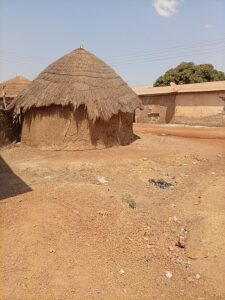Explore the profound history of the Dagbon Kingdom in Tamale, the capital of the Northern Region. It is one of the largest and oldest traditional kingdoms in Ghana. Also, it is founded by the Dagomba people. Moreover, the Dagbon Kingdom play a vital role in the rich culture and tradition of the Northern Region.
One of the remarkable things about the Dagbon culture is its ability to preserve its culture amidst changing times. Moreover, the people of this kingdom have a unique way of preserving their culture and traditions.
In addition. the Dagbon Kingdom has historical landmarks which serve as tourist attractions to visitors. These landmarks are a testament to how the kingdom has withstood centuries of social and political changes.
For tourists looking to explore the historical and cultural roots of the Northern Region, the Dagbon Kingdom offers a rich journey through the past.

In this article, you are going to uncover more about the history and culture of the people. Relax, sit back and read on as we delve into the Dagbon Kingdom to explore more.
History of the Dagbon Kingdom
As one of the oldest traditional kingdoms, the Dagbon Kingdom was founded during the 15th century. It was founded by the Dagomba people who were unified by Naa Gbewaa and his descendants. Also, the people are led by a chief who they call Yaa Naa.
The Yaa Naa is the highest authority in the Dagbon Kingdom. He oversees a network of subordinate chiefs who manage the diverse aspects of the local governance. This order of hierarchy is practised to maintain. Moreover, it also preserves the rich tradition of the kingdom. In addition, this form of chieftaincy is important in upholding ceremonies and cultural rituals.
The Dagomba people celebrate the Damba festival. Damba festival is celebrated by parading the town, drumming and dancing in beautiful traditional costumes. The festival is celebrated to honour the history and heritage of the Dagbon Kingdom. Furthermore, it brings the community together and celebrates their identity. Moreover, it is a reflection of the deep-rooted customs and strong sense of unity among the people.
- Language
Furthermore, the Dagbani language is the common dialect spoken by the Dagomba people. Dagbani is a means through which the people pass down their culture and traditions. These cultures and traditions are passed down through stories and proverbs. It plays an important role in maintaining the heritage of the kingdom.
- Occupation
In addition, the people of the Dagbon Kingdom are farmers and textile weavers. They weave beautiful and colourful textiles called “fugu”. Their way of weaving this textile depicts their values, beliefs and culture. Moreover, most of their foodstuffs are locally cultivated by their farmers. Some of their food crops include yam, maize, rice, cowpea, sorghum and millet.
- Food
Furthermore, the people of the Dagbon Kingdom are known to be good cooks. Tuo zaafi and ayoyo are one of the most common dishes they enjoy. It is prepared from either corn, millet or sorghum flour. Other delicacies include;
- Wasa Wasa which is made from yam
- Tubaani made from cowpea
- Zomkom (millet drink) made from ginger and millet
- koko and koose and others.
- Historical Landmarks
Dagbon Kingdom is home to several historical landmarks that offer a glimpse into its past. The ancient palaces and mosques are not only architectural marvels but also symbols of the kingdom’s enduring legacy. These landmarks serve as a reminder of the kingdom’s rich history and its role in shaping the cultural landscape of Northern Ghana.
READ ALSO: Top 7 Attractions in the Northern Region
[…] READ ALSO: Dagbon Kingdom: Roots of the Dagomba People […]
[…] Dagbon Kingdom: Roots of the Dagomba People […]